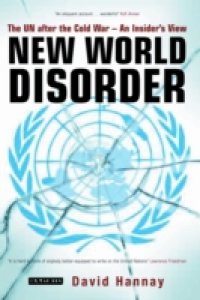The end of the Cold War triggered a historic shift in world politics, and nowhere was this more keenly felt than in the United Nations. After the collapse of the Soviet Union, the Security Council was freed from the paralysis caused by superpower rivalry. It was also having to face an entirely new set of challenges as the stabilising structures of the old world order crumbled, and a wave of nationalist struggles, secessionism and identity conflict rose up to take their place._x000D__x000D_As Britain's Ambassador to the United Nations, David Hannay was inside the struggle to meet these challenges during this tumultuous period. With a wry eye for observation and the insights of 35 years diplomatic experience, he narrates his experience of life behind the scenes of the world's centre-stage._x000D__x000D_Just weeks after George Bush and Mikhail Gorbachev's historic handshake, the UN was being asked to repel the Iraqi invasion of Kuwait, to wind up a string of Third World proxy wars in Cambodia, El Salvador, Angola and Mozambique and to find a solution to the challenges of environmental degradation and climate change. At first the Five Permanent Members of the Security Council, worked together to an unprecedented extent, with notable success. But as Hannay shows, little was done to prepare for the problems of state failure - in Somalia, in the former Yugoslavia, in Rwanda and in Afghanistan - which proved beyond the UN's capacity to handle and which frayed the solidarity of the main powers. _x000D__x000D_As setbacks accumulated, pressure for fundamental change of the UN system began to build up, culminating in Kofi Annan's reform campaign from 2003-6. As a member of the Secretary General's High Level Panel, Hannay was at the forefront of the drive for the most ambitious package of reforms since the UN was established in 1945, and relates candidly here how it came to be derailed._x000D__x000D_New World Disorder is an invaluable source of information for anyone seeking to understand the current structures, dynamics and trends of world politics. It is also a compelling account of one of the great turning points in world history, as seen from inside the eye of the storm. _x000D__x000D_._x000D_

